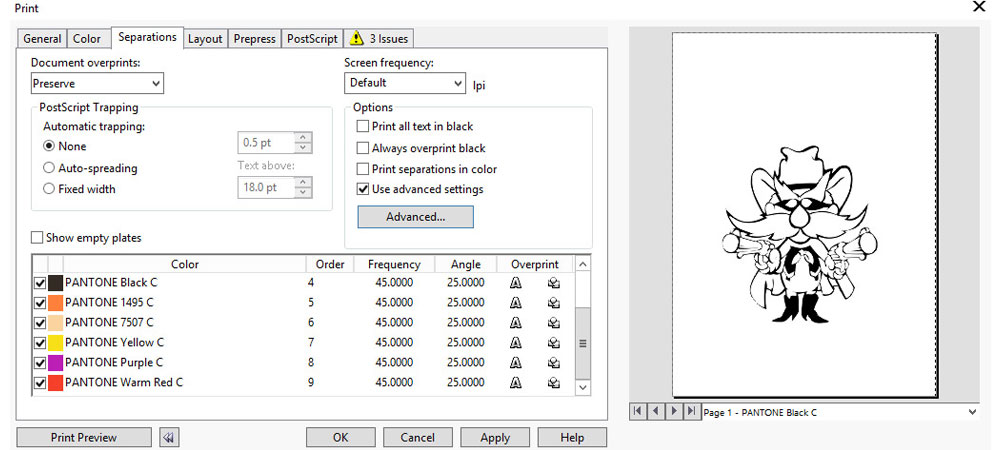Strategy October 19, 2017
Unleash Your Color Palette
Most art programs default to CMYK colors, which doesn’t work well for screen printer
If you’re a screen printer who is new to using a vector artwork program like Corel Draw or Adobe Illustrator, this article is for you. One of the most confusing aspects of using these programs is to know what to change to make them screen-print friendly.
It’s important to understand that in all graphic programs the default settings for key parts are designed for paper printing and for printing with CMYK colors (cyan, magenta, yellow and black). The problem with that is in T-Shirt screen printing, we rarely use CMYK colors, especially for an image with specific spot colors. In the world of CMYK printing, all colors are made from just cyan, magenta, yellow and black. That means if you create a graphic using CMYK, you’d need to print films for magenta and yellow to make red. That is NOT how screen printers do it.
Let’s look at Corel Draw first. In the Corel main window, the default “color palette” is a CMYK palette. If you are new to computer graphics and follow the Corel tutorials or manual, it pretty much says to simply use the default color palette to fill images with color. You click on a color and drag it to the image, if you’re trying to fill a piece of simple clip art with color.

On the computer screen, your image will look the same, whether you’re using the default color palette or a spot color palette, but it won’t print properly unless you switch away from CMYK.
It all looks good in this view. As a screen printer, you would print these all as spot colors of ink. But, when you go to the print window all you get are the colors of cyan, magenta, yellow and black. Again, this is NOT what you want. You want to print out spot colors, so that you print these exact colors.
It is VERY important to change from the default color palette in any graphics program to a spot color palette, normally called a Pantone color palette. In Corel, you do this by going to Window/Color Palettes and choosing Pantone Spot Color Coated. If you don’t see it there, click on Color Palette Manager and choose Pantone Spot Color Coated. To keep your workspace clean, uncheck the default color palette.

When you’re using a spot color palette, the print window will show the exact colors you’ll be printing, rather than reverting to just cyan, magenta, yellow and black.
When you fill the same piece of clip art with colors from the Pantone spot color palette, the image will look the same. Now, when you go to the print window, you have exactly what you want: spot colors that can be printed to film. When you want red, you get a red film and you print red ink – and not magenta and yellow to make red.
If you have gray levels in the image, you’ll need halftones, and that means you’ll need a software RIP (another topic for another time), and you’ll need to change the halftone frequency and angle.
Adobe Illustrator (AI) is the same. The default swatch is CMYK, and if you use these colors to colorize a vector image you end with just four print colors: CMYK. Again, this is not what you want. To change this, open the swatches panel by going to Window/Swatches. Next, go to the bottom left icon that stands for Swatch Libraries Menu. Choose Color Books and Pantone Solid Coated.
You now have a Spot Color Swatch ready to use. When you fill the artwork with colors from this swatch, you have filled it with spot colors and they show up as individual colors in the rint window. This is exactly what you need to print separations for each ink color you want to print.
As a side note, some of the ink companies have custom swatches for their specific ink colors. Ask them or check their websites.
***
Scott Fresener has been in the industry since 1970 and is the co-author of How To Print T-shirts For Fun And Profit. He created two automated separation programs, T-Seps and FastFilms, and is considered a pioneer in the direct-to-garment printing segment. Fresener is the director of T-Biz Network and is a popular speaker at trade shows. Fresener is also past Chairman of the Academy of Screen Printing Technology and was on the Board of Directors of SGIA. He runs the website www.T-BizNetwork.com. Reach him at scott@tbiznetwork.com.
